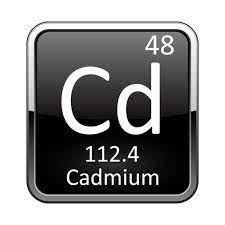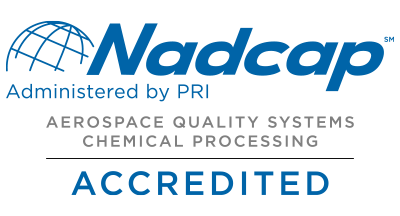Cadmium: Beauty or Beast?
| The beauty and majesty of stained glass, many dating back centuries, owe their brilliance to naturally occurring metals found in nature. Among these, cadmium sulfate is used to achieve magnificent yellows. Similar cadmium compounds are used for red and orange. Other metals used to infuse color into glass include cobalt, gold, lead, copper and even uranium (for florescent green). |  |
 |
Cadmium is also used in making nickel-cadmium rechargeable batteries used to power cell phones and cordless appliances. Cadmium is being used for production of cadmium telluride solar panels and aircraft landing gear. Cadmium is also widely used in electroplating due to its extraordinary corrosion resistance particularly in marine environments. For instance, 0.0003 inch of cadmium is said to have equal protection as 0.0010 inch of zinc. When aluminum is being joined with steel or stainless steel, cadmium plating is often used to prevent galvanic corrosion due to dissimilar metals. In electrical applications such as connectors, cadmium is used over zinc as the corrosion product of cadmium in far less voluminous than that of zinc. |
The beauty and majesty of stained glass, many dating back centuries, owe their brilliance to naturally occurring metals found in nature. Among these, cadmium sulfate is used to achieve magnificent yellows. Similar cadmium compounds are used for red and orange. Other metals used to infuse color into glass include cobalt, gold, lead, copper and even uranium (for florescent green).
Cadmium is also used in making nickel-cadmium rechargeable batteries used to power cell phones and cordless appliances. Cadmium is being used for production of cadmium telluride solar panels and aircraft landing gear. Cadmium is also widely used in electroplating due to its extraordinary corrosion resistance particularly in marine environments. For instance, 0.0003 inch of cadmium is said to have equal protection as 0.0010 inch of zinc. When aluminum is being joined with steel or stainless steel, cadmium plating is often used to prevent galvanic corrosion due to dissimilar metals. In electrical applications such as connectors, cadmium is used over zinc as the corrosion product of cadmium in far less voluminous than that of zinc.
On the other hand, despite being a naturally occurring element, cadmium has been under increasing scrutiny due to health, safety and environmental concerns. Upon repeated inhalation or ingestion cadmium exerts toxic effects on the kidneys as well as the skeletal and respiratory systems. It is classified as a human carcinogen. That said, with sound personal hygiene and protective equipment such as gloves and prohibiting blasting or high temperature baking of cadmium, exposure to cadmium can be virtually eliminated.
 |
Industry has been looking for a single, drop-in replacement for cadmium for decades. Zinc alloys including zinc-iron, zinc-cobalt and zinc-nickel have all been used to some extent. When it comes to replacing cadmium and titanium-cadmium alloy plating on high strength steel used in aircraft landing gear, the US Air Force, Boeing and Bell Helicopter, among others, have migrated over to low-hydrogen embrittlement (LHE) zinc-nickel such as Anoplate’s Zynik II (ref. AMS 2461). These specialty LHE zinc-nickel deposits generally contain 12-16% nickel and are deposited from alkaline electrolytes. When it comes to electrical connectors, blackened zinc-nickel and electroless nickel with co-deposited PTFE have been widely used. |
While the search for cadmium replacements continues, regulatory pressure will curtail wider use and the number of plating firms offering cadmium will continue to shrink. With a state-of-the-art wastewater treatment system to remove cadmium from our effluent and sound PPE practices to protect our workforce and the environment from exposure, Anoplate will continue to offer cadmium plating. On the other hand, if you’re looking to replace cadmium, we’d urge you to consider Anoplate’s Zynik II, LHE zinc-nickel plating.
--
Anoplate, nickel cadmium battery, cadmium poisoning, nickel cadmium battery, AnoBlack, nickel cadmium, cadmium charge, Cadmium sulfate, Electroplating, Zinc alloys, metal alloys, Low-hydrogen embrittlement zinc-nickel, zamak, zinc alloy metal, Cadmium plating benefits, Nickel-cadmium alloy properties, Cadmium alternative coatings, Nickel plating advantages, Cadmium toxicity concerns, Cadmium vs nickel corrosion resistance, Cadmium-free metal finishing, Nickel-cadmium battery applications, Cadmium electroplating process, Nickel-cadmium coating specifications













